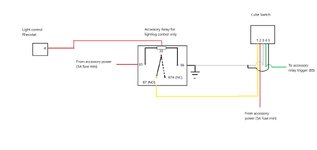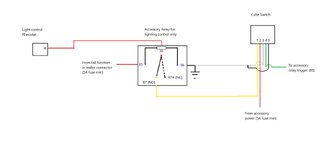I've gathered the DOCs from TIS and will attempt to get the anytime dash backlighting MOD to work this weekend as time permits.
Also got ahold of the full dimmer circuit and will test its operation if I get the time as well to see if it can be made to control CH4X4 and other sources of Toyota cube switches for dimming purposes. I'm currently running an additional dimmer to dim my accessory swtiches to match OEM levels. This MOD if it works may still require an additional dimmer to match OEM brightness which I'll also check for as well.
If all goes well I'll post the information back here when done and have everything verified.
I discovered I really need the anytime dash lights this weekend when driving as some of the switches I was looking to press I couldn't read in the daylight without parking lights or above on due to how dark these are on the inside and the front side window tint doesn't help with that.
Also got ahold of the full dimmer circuit and will test its operation if I get the time as well to see if it can be made to control CH4X4 and other sources of Toyota cube switches for dimming purposes. I'm currently running an additional dimmer to dim my accessory swtiches to match OEM levels. This MOD if it works may still require an additional dimmer to match OEM brightness which I'll also check for as well.
If all goes well I'll post the information back here when done and have everything verified.
I discovered I really need the anytime dash lights this weekend when driving as some of the switches I was looking to press I couldn't read in the daylight without parking lights or above on due to how dark these are on the inside and the front side window tint doesn't help with that.




